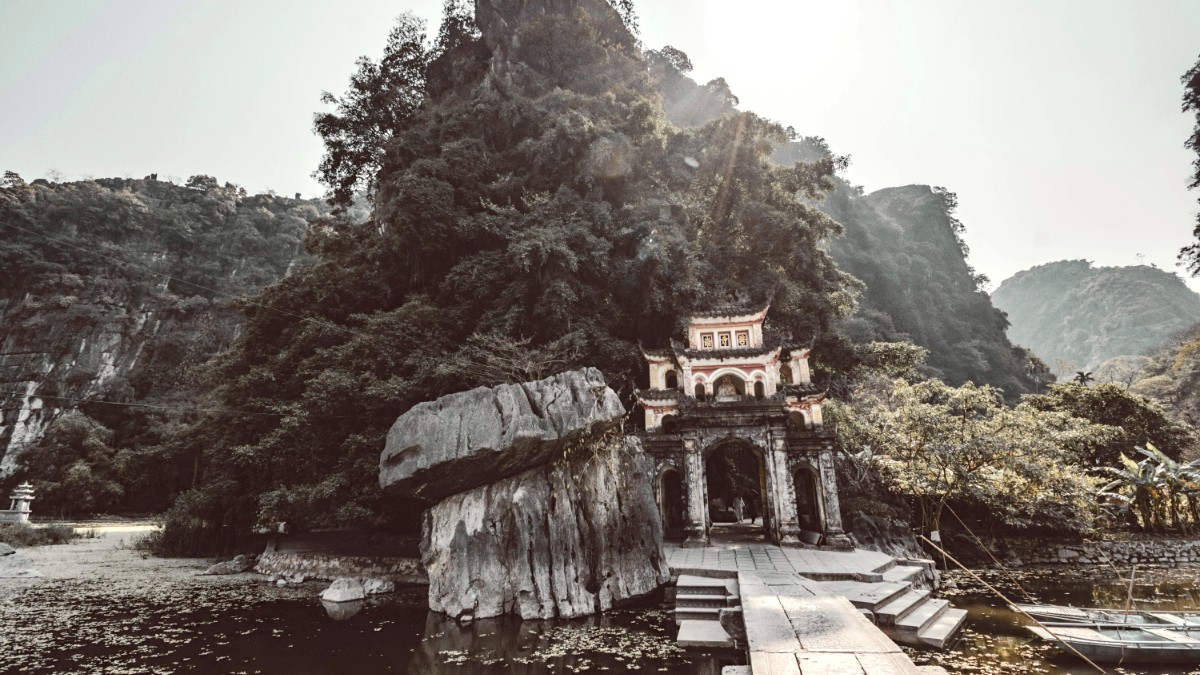
North Central Vietnam, Vietnam
Spring (March - April): Temperatures range from 20-28°C (68-82°F). This period has low to moderate rainfall and comfortable humidity levels. This is a popular time to visit due to pleasant weather.
Summer (May - August): Temperatures ascend to 28-35°C (82-95°F), often hotter due to high humidity (75-90%). Frequent heavy rains occur, sometimes with thunderstorms, especially from July to August.
Boat trips (Tam Coc, Trang An): Plan your trips for March-June and September-October. These months present optimal weather and lush scenery. Late May/early June and late September/early October grant the added bonus of golden ripe rice paddies, perfect for photography.
Hiking (Mua Cave): The cooler, drier months from November to April prove ideal for climbing Mua Cave. This avoids the intense heat and humidity of summer.
(April - June & Sept - Oct)
Optimal weather for outdoor activities; lush or golden rice paddies.
Higher tourist volume, elevated prices for accommodation and tours; attractions feel busier.
(March & November)
Pleasant weather; fewer crowds than high season; good value.
Moderate tourist presence persists; attractions not entirely uncrowded.
(Dec - Feb & July - Aug)
Fewer tourists, lower accommodation and tour prices; winter weather suitable for active pursuits.
Winter can bring grey, misty days obscuring views; summer introduces intense heat, humidity, and heavy rain.
March-April and September-November present pleasant temperatures for cycling through the scenic rice paddies and villages.
March-April displays clear skies and intensely green landscapes, ideal for photography amidst fields.
Clear skies, green rice paddies, comfortable temperatures.
Golden ripe rice paddies, but temperatures climb.
Golden ripe rice paddies again, with pleasant temperatures returning.
Generally dry and sunny, cooler for extended rides.
High heat, humidity, and rainfall make cycling strenuous.
Arrange your visa and entry documents well in advance of your trip to Vietnam. Requirements differ based on your nationality and length of stay.
Vietnam offers several visa options depending on your nationality and travel plans. Always check current regulations.
Carefully prepare your documents to ensure a smooth entry process.
E-visa fee: Approximately US$25 for single entry, US$50 for multiple entry (up to 90 days). Payment occurs online during application.
VOA Stamping Fee: Around US$25 for single entry, US$50 for multiple entry (up to 90 days). Payment occurs in cash (USD or VND) upon arrival at the airport.
Present your passport, visa (or e-visa printout), and a completed entry/exit form (if needed) to immigration officers upon arrival. Follow their instructions calmly.
Generally, no special permits are necessary for standard tourism activities in Ninh Binh. Access to certain protected areas, like Cuc Phuong National Park, may carry an entrance fee. These fees typically support park upkeep and conservation efforts.
Vietnam currently mandates no specific health-related entry requirements for general country entry. Verify current travel advisories from your government before your trip.
Allocate your budget for Ninh Binh with an understanding of local currency, exchange rates, and typical expenses. Cost varies significantly based on your travel style.
The official currency is the Vietnamese Dong (VND). Exchange rates fluctuate, but an estimated guide is 1 USD ≈ 24,000 - 25,000 VND (as of late 2023/early 2024).
Tipping is not a traditional practice in Vietnam but receives increasing appreciation, especially in tourist-oriented services.
Optimize your spending in Ninh Binh with these additional approaches.
Your health takes precedence when traveling to Ninh Binh.
Traveler's Diarrhea: This occurs frequently. Practice good food hygiene: eat hot, freshly cooked food. Drink only bottled or purified water. Carry Anti-diarrhea medication (e.g., Imodium).
Mosquito-borne illnesses (Dengue Fever, Zika): These illnesses exist, especially during the rainy season. Employ an effective Insect repellent with DEET or Picaridin. Wear long sleeves and pants, particularly at dawn and dusk.
Avoid tap water. Stick to bottled water, which is readily available. Many accommodations furnish complimentary bottled water. Consider a Water filter bottle for environmental and cost savings.
Opt for sealed bottled water.
Do not consume tap water.
Consume hot, freshly cooked food. Peel fruits yourself. Use caution with raw vegetables, as they might have been washed in tap water. Select busy street food stalls; high customer turnover generally secures fresh ingredients.
Choose popular, busy stalls.
Avoid unpeeled raw fruits/veg from unknown sources.
Ninh Binh typically offers a safe environment for tourists. Petty crime, like pickpocketing and bag snatching, may occur in crowded areas (markets, bus stations). Stay vigilant, especially with valuables. Carry bags securely.
Stay aware in crowded zones.
Do not leave valuables unattended.
| Category | Details | Action |
|---|---|---|
| Vaccinations | No particular vaccinations are necessary for entry to Vietnam unless arriving from a Yellow Fever risk country. Recommended: Routine, Hepatitis A & B, Typhoid. Consider Japanese Encephalitis, Rabies depending on activities. | Confer with your doctor or a travel clinic well before your trip for personalized advice. |
| Travel Insurance | Highly recommended for all travelers. Policy should span medical emergencies, emergency evacuation, trip cancellation, and lost luggage. Verify coverage for activities like motorbiking if planned. | Reputable providers include World Nomads, SafetyWing, or Insubuy. Carefully read policy details. |
| Emergency Contacts | Police: 113; Fire: 114; Ambulance: 115. For flight compensation, contact AirHelp. | Maintain your country's embassy or consulate contact information for ready access (mostly in Hanoi). |